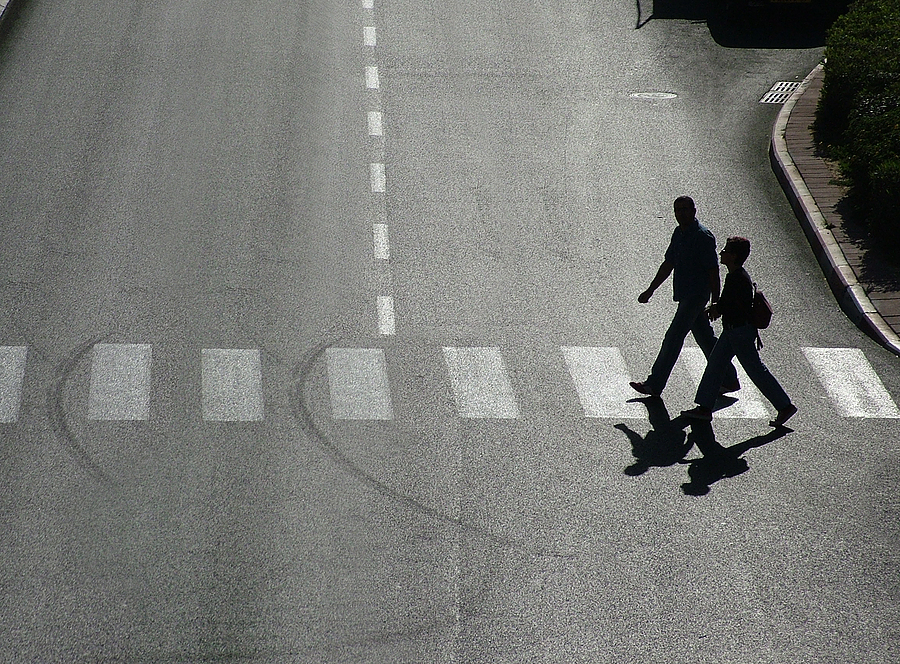Pedestrian fatalities increased six percent in the first six months of 2015 compared to the same period in 2014, according to preliminary figures provided by Dr. Richard Retting, a national practice leader for safety and research at Sam Schwartz Consulting.
Retting, a recognized expert in traffic safety, spoke during a televised pedestrian safety forum held by the National Transportation Safety Board last week.
While there has been a 15 percent increase since 2009, over the long term fatalities have dropped 30 percent since 1975, said Dr. Jessica Cicchino, vice president of research for the Insurance Institute for Highway Safety and the Highway Loss Data Institute.
The highest pedestrian fatality rates are among those 70 and older. The most noticeable decline in pedestrian deaths is among children, with rates declining 92 percent since 1975.
The forum focused on efforts to reduce pedestrian fatalities. Panelists’ suggestions included looking for ways to increase separation between pedestrians and autos, increasing pedestrian visibility, reducing traffic speeds and making vehicle design changes. Though public education was also suggested, experts noted there was little evidence supporting its effectiveness.
 Increased focus on the issue is expected, since the Federal Highway Administration is planning to include pedestrian accident data within their federal database.
Increased focus on the issue is expected, since the Federal Highway Administration is planning to include pedestrian accident data within their federal database.
Significant time was spent discussing ways to improve street safety for pedestrians.
Linda Bailey, executive director of the National Association of City Transportation
Officials, suggested that islands placed in the middle of intersections and reduced speeds could improve safety for both pedestrians and cyclists.
According to Carl Sundstrom, a senior researcher at the University of North Carolina, Highway Safety Research Center, intersections are among the most dangerous places for pedestrians. Some ways to reduce auto pedestrian accidents include adding a protective left turn signal or by providing lead time to give pedestrians a head start on crossing the street. The two options can be added at virtually no cost, he said.
Another panelist said that offering the option of turning right on red, along with a large turning radius, has increased hazards for pedestrians crossing a road. Highway on and off ramps and construction work zones, where sidewalks are closed for an extended period of time, were deemed particularly hazardous.
Traffic light positioning and wording on traffic signs can make a big impact on safety, one expert said. Changing a sign to read “no left turn on red” that previously read “left turn on green arrow only” raised compliance immediately in one example.
According to Luisia Paiewonsky, the director of VOLPE Center for Infrastructure Systems and Technology, the focus on safety in the past was on inside out – concentrating on the vehicle, the road and infrastructure whereas now the focus is on the outside in, especially where it concerns pedestrians and cyclists.
New York City’s Vision Zero plan was also discussed. Based on a Swedish model, it centers on the idea that crashes aren’t accidents, rather they are the result of systematic failure.
Panelists also discussed improving pedestrian safety through vehicle technology. In the future, Smart intersections, infra-based technology will allow digital recognition of pedestrians for use by smart vehicles, said Bob Kreeb, Intelligent Technologies Research for the NHTSA.
MobileEye is conducting a trial in New York City that shows promise in predicting accident hotspots by locating where warnings occur more frequently, said David Zuby, executive vice president and chief research officer with the Vehicle Research Center for the IIHS/HLDI.
In terms of vehicle to vehicle communication, older vehicles could be retrofitted, said Kreeb. “It does lend itself to retrofit,” he said, noting that they have conducted a 3000 vehicle test in Michigan with primarily older vehicles.
Retrofitting isn’t always a solution, said Sven Zimmerman, engineering manager for Bosch Chassis Systems Control – Driver Assistance and Automated Driving, because aftermarket equipment has proved ineffective in avoiding pedestrian accidents.
Another issue involves how many warnings is too many for drivers. Under what conditions should the driver be warned of an impending crash, one expert asked. Issuing too many nuisance warnings could result in a driver turning off the warning system. Zimmerman tests cars passively to see how frequently near misses happen and to determine the number of warnings that are appropriate.
The forum wrapped up its discussion on pedestrian safety noting that a combination of policies, design changes and vehicle technologies could reduce injuries and deaths.
NTSB is working on its first special investigative report on pedestrian safety, according to T. Bella Dinh-Zarr, PhD, vice chairman of the NTSB, which should be released later this year.
Was this article valuable?
Here are more articles you may enjoy.


 NYC Sues Delivery App Over Lost Pay in New Mamdani Crackdown
NYC Sues Delivery App Over Lost Pay in New Mamdani Crackdown  Billionaire NFL Owner Suing Over Billboards Near His SoFi Stadium
Billionaire NFL Owner Suing Over Billboards Near His SoFi Stadium  Tesla, EEOC Plan Talks to Settle Factory Racism Suit
Tesla, EEOC Plan Talks to Settle Factory Racism Suit  What The Return of California’s ‘Death Discount’ Means for Litigation
What The Return of California’s ‘Death Discount’ Means for Litigation 